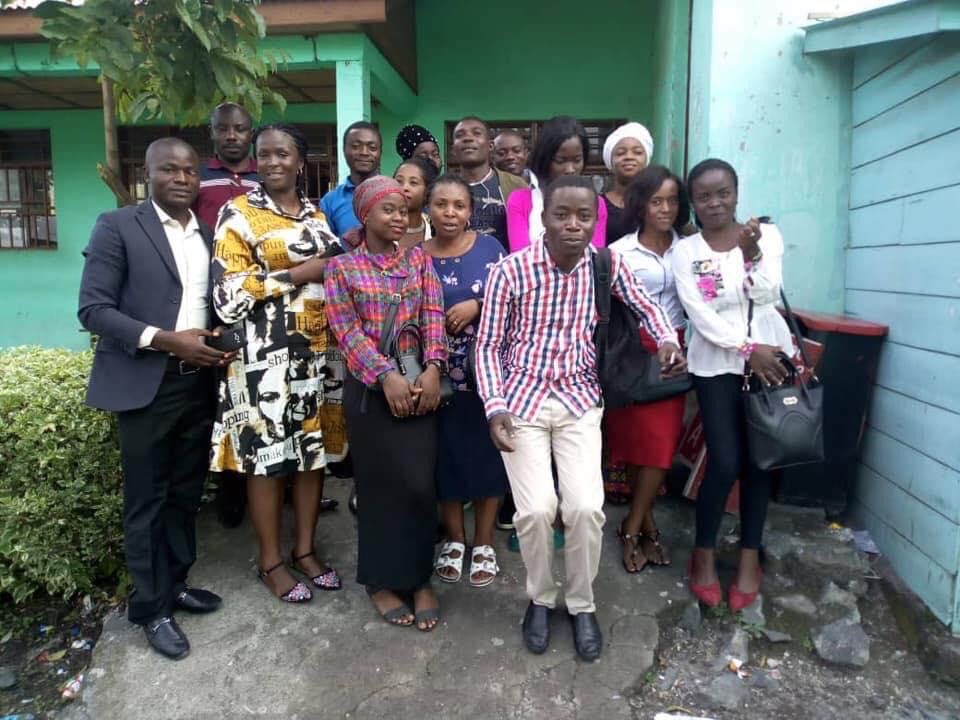
SELF-HELP AND RESILIENCE IN THE DEMOCRATIC REPUBLIC OF CONGO
I interviewed Bertin Kalimbiro from the Democratic Republic of Congo about his work in the Goma region to grow food safely and help people threatened
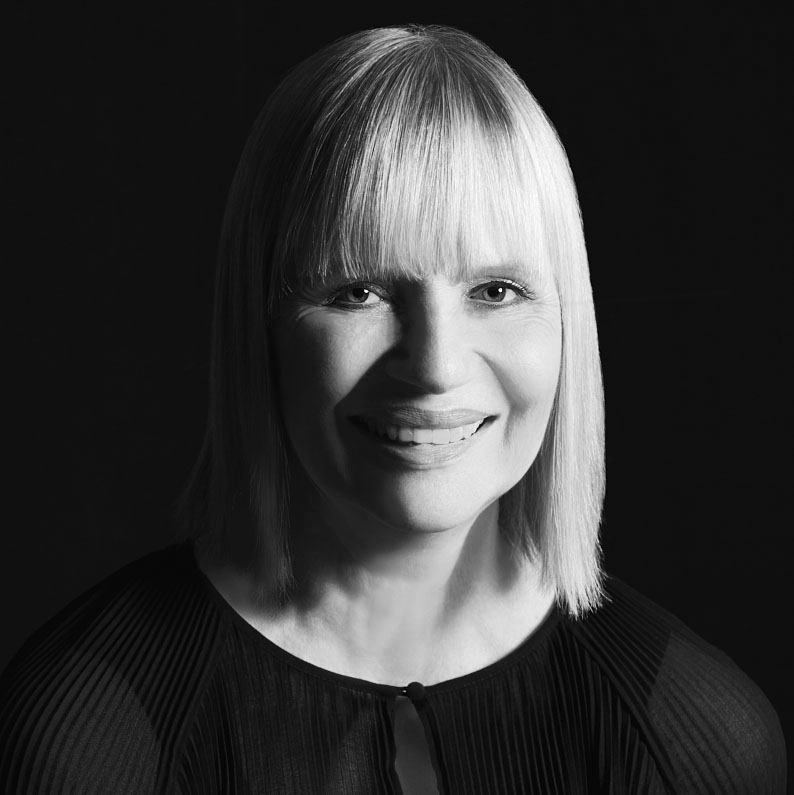
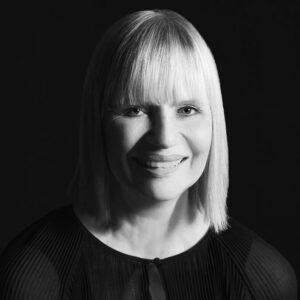
I interviewed Gaele Sobott, founder and creative director of Outlandish Arts, a disabled-led arts organisation, and author of Colour Me Blue, a collection of short stories set in Botswana, and My Longest Round, the life story of Wiradjuri man and champion boxer Wally Carr.
In the first half of her interview Gaele introduces her upbringing and disability work, her creative methods as a cross-genre wordsmith and her reaction to the Australian bush fires and the current climate emergency.
Leslie: Could you tell the story, please, of how your interest in various forms of writing and disability arts began, grew and developed? How did your early life shape your creativity?
Gaele: I was born and grew up in regional Victoria, Australia. When I was very young, I did the rounds of all the Sunday schools; Methodist, Anglican, Presbyterian, Catholic, to collect books. I liked the stories. We moved around a fair bit but for as long as I can remember, public libraries were the centre of my world. When we lived in a small fishing town where there was no library, I looked forward to the bookmobile that drove in regularly. My parents also paid off a set of Grolier encyclopedias which provided me with hours of reading. We had an Astor radio with two shortwave bands. I discovered Radio Moscow and would listen to their English program. I received books and plastic records from them in the mail. I particularly loved traditional stories or folktales from around the world about magical and imaginary beings. So I would say that access to stories, books and reading during my early life definitely shaped my later creativity.
My interest in writing developed at school, particularly the secondary school I attended in Melbourne, where I had dedicated English Literature and History teachers who encouraged me to write. I kept a journal during that time and, as a teenager, was influenced by the politics of the Vietnam Moratorium and the growing women’s liberation movement.
I remember seeing demonstrations by disabled people on TV but knew very little about disability politics. I did not then identify as disabled. My understanding of disablement as a political concept only came about in the late 1990s when I began to experience impairment that affected my mobility and my access to buildings, transport and events. My involvement in disability arts only really started in the early 2000s when I came back from living overseas for over twenty years. I met with Amanda Tink and Josie Cavallaro at Accessible Arts NSW, who assisted me quite a lot in understanding the disability arts environment in NSW and Australia. At that time, I started writing my body into my work, the way I moved through the world, my experiences with hospitals and doctors. I was part of the first Australian cohort of Sync, a training program presented by the Australia Council for the Arts that focused on the interplay between leadership and disability. The people I met there and the course itself helped me understand that as disabled people, we can lead through our art and arts work. I founded Outlandish Arts, a disabled-led arts company for disabled artists across all art forms.
Leslie: Can you explain how the Botswana connection has led to various books?
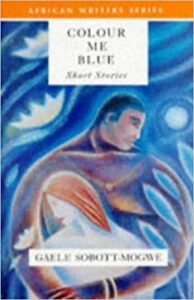
Gaele: I lived in Botswana for what now amounts to over a third of my life. I married there, and our daughters were born and grew up in Botswana. I gained my undergraduate education at the University of Botswana. I have a deep love for the country. My writing was informed and is still informed by the smells, the rhythms, the geography, friendships and culture of Botswana. I began my writing career in Botswana, publishing my first short stories in Staffrider Magazine, an anti-Apartheid platform for a new generation of community-based arts groups allied to the Black Consciousness movement. One of those stories was a response to the South African Defence Force cross-border military attacks and murder of people in Botswana in 1985. I felt a need to write stories with African contexts for children when my children were in primary school as they only had access to books written and illustrated in England. I published some children’s stories for the African market with Heinemann JAWS and Longman GEM series and Thara and the Cassipookhaman with Baobab Press. In 1996, Heineman published Colour Me Blue, my first collection of short stories set in Botswana and southern Africa.
My degree at the University of Botswana was a double major in History and English. As part of the history degree, I researched women’s lives during the Second World War. I interviewed women who had stayed behind and coped in challenging circumstances as most of the working male population of Botswana were sent to war or the mines as part of the war effort. I also spent a lot of time in the Botswana National Archives. Some of my short stories were based on material I found in the archives. Bahumagading, a story recently published in the anthology Botswana Women Write, was based on an oral interview and archival research. I completed a PhD on Black South African women writers at the University of Hull, England and did similar oral interview and archival research in South Africa and Botswana. I have always had a love of history, archival documents, letters, oral testimony. Botswana schooled me in life writing.
I recently revisited the trauma of the 1985 South African Defence Force cross-border attacks on Botswana and read through the Truth and Reconciliation Commission of South Africa reports and media reports about the Commission proceedings. The Commission reveals the tip of the iceberg of such incredible horror, cruelty and brutality. I wrote another short story. I wanted to remember those killed for resisting Apartheid, those who died in the cross-border raids and pay homage to two Botswana women, our neighbours, who were murdered by the South African Defence Force. New Contrast, a South African literary journal, published that story.
Leslie: You’re an Australian-based writer. Can you introduce us to the range of writing that comes out from that experience and the technical ways you’ve tried to represent magical/mythological and contemporary political Oz? How do you use language to inform, educate and inspire the reader/listener?
Gaele: I wrote a collection of short stories around the fictional lives of people living in a block of flats. I based the writing on my experiences living in an old block of flats in a Western-Sydney neighbourhood well off the tourist track and light-years away from the Inner-West suburbs. It was about lives in transition. Most people renting those flats don’t stay for long. I chose to write these stories in the first person. This point of view offered me more flexibility in representing the varied standpoints of the characters and the diversity of people who live in Western Sydney. I also found the first-person voice made it easier to include the traditional folklore and fables, music, foods, clothing that characterise different cultures living together.
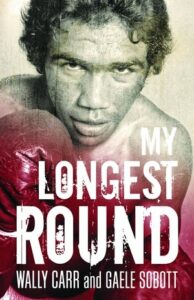
I worked with champion boxer Wally Carr for six years to write his life story. That writing drew on archives, boxing magazines, and many interviews with Wally’s extended family, friends, school teachers. I spoke to cotton bosses who supervised him when he worked on the cotton fields, work colleagues, other boxers — some of them his past opponents, gangsters and media personalities. Wally was a Wiradjuri man who knew a lot of people from all walks of life. In My Longest Round, I represented his love of a yarn, his background, his essence by writing in the first person.
I also chose the first-person voice to represent the lives of a group of Bankstown First Nations’ Elders in a book called Young Days. I worked with the Elders on their entries to represent their spoken voice accurately, make it flow as a written text and remain faithful to how they wanted to present their stories. I find first-person writing best evokes the rhythms of life, the intimacy of intricate family and community relationships, and relationships to land, rivers, animals and plants, urban environments and myth. As a writer, it means listening very closely, observing and to some extent living that voice.
It’s taken me a while to find my footing in terms of writing Australian contexts. Especially given our colonial history and the fact that our identity as a nation has been built upon the violent theft of land — land which is still unceded, and upon genocidal policies against First Peoples, some of which continue today.
I think all writers who are not First Nations writers in Australia carry the responsibility of acknowledging and respecting the history, culture and contributions of First Nations’ peoples — the oldest continuing peoples; the ancestors, elders and emerging generations. Respect for the country we live on while we write and the country about which we are writing.
After experiencing the 2019/2020 NSW fires, I feel an absolute urgency to write. Those fires all over Australia were unprecedented in their extent and intensity. The fire ground in NSW covered over 5.5 million hectares (7% of the state). England is about 13 million hectares. So that’s over a third, almost a half of England. These fires devastated the land, killing over three billion animals, that’s not counting worms and insects etc. Air pollution levels were extreme in the cities and countryside. The consequences of breathing highly toxic air are yet to be discovered. People lost livestock and property. Many are still waiting for assistance to build new homes, water tanks etc.
I was in Moruya on New Year’s Day; we were evacuated to an indoor basketball hall as the fires approached. Electricity poles burned, so there was no electricity. We were cut off without phone communication, no TV, some people had very poor reception but could make out ABC radio reports, the roads were closed so there was no food in the supermarkets, the fires polluted the drinking water.
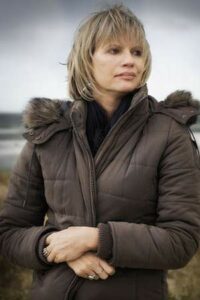
Most of what I write now is apocalyptic. I wrote an essay expressing my disgust at Australian politics. I interview people for my blog. I wrote a short story for the Speaking Volumes UK anthology Not Quite Right For Us, published by flipped eye in May 2021, which describes life after many fires. I am writing poems about our interconnectedness to microbiota, to trees and water and air. We are facing one crisis followed by another. Last month we experienced unprecedented rains and flooding. Climate emergency, pandemics, increased poverty and isolation for many sectors of society, politicians and political parties are blatantly corrupt. The apocalypse is upon us. I cannot help but write the apocalypse, write against the brutality of capitalism in crisis, write the alternative worlds we want to see. I’m writing in desperation. My writing is a battle cry.
Leslie: What’s your creative process and how does it vary according to the type of writing (or other mediums) you’re using?
Gaele: I am a slow writer. I do a lot of researching and thinking before I write anything and while I write. It’s rare that a piece of writing pops out and is done. I also spend a lot of time reworking and polishing. I rely on a few friends who are editors to read my work and give me feedback. Because of the demands of family, the need to earn a living and community activism, I have always struggled to get the time I need to write. That’s frustrating.
I set myself minimum daily writing tasks so at least I get something done; usually, I do more than the minimum but if I don’t, at least I have stuck to my writing routine. I also spend a fair bit of time daydreaming. When I am driving, I do a lot of the thinking I need for my writing. I float off whenever it is possible, sometimes when I am supposed to be focusing my attention elsewhere. That’s okay. I value my dreaming time.
Over the last year, I started writing poetry and working with a team to create animations. That’s been a great way to get my message to a broader audience. It has been very satisfying collaborating with the animator, the sound designer and the video editor on these projects. We can make art without physically meeting. We work remotely but as a team. When collaborating in this way, I need to give unambiguous instructions and express my ideas through various means, visually, in writing, with sound.
In part 2 next week, Gaele talks about her campaigning and creative work.
ABOUT LESLIE TATE’S BOOKS:

I interviewed Bertin Kalimbiro from the Democratic Republic of Congo about his work in the Goma region to grow food safely and help people threatened

I interviewed computer expert and sustainability campaigner Dr Erlijn van Genuchten, who writes easy-to-understand books based on science full of practical suggestions for planet-friendly living.
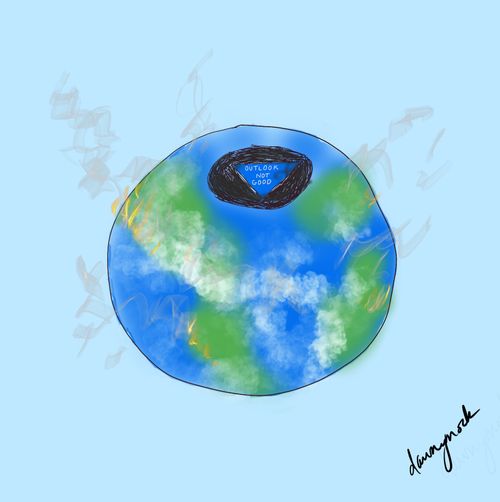
I interviewed Canadian cartoonist Dawn Mockler about how she works on cartoons that might be environmental or wordless but always witty – especially her famous
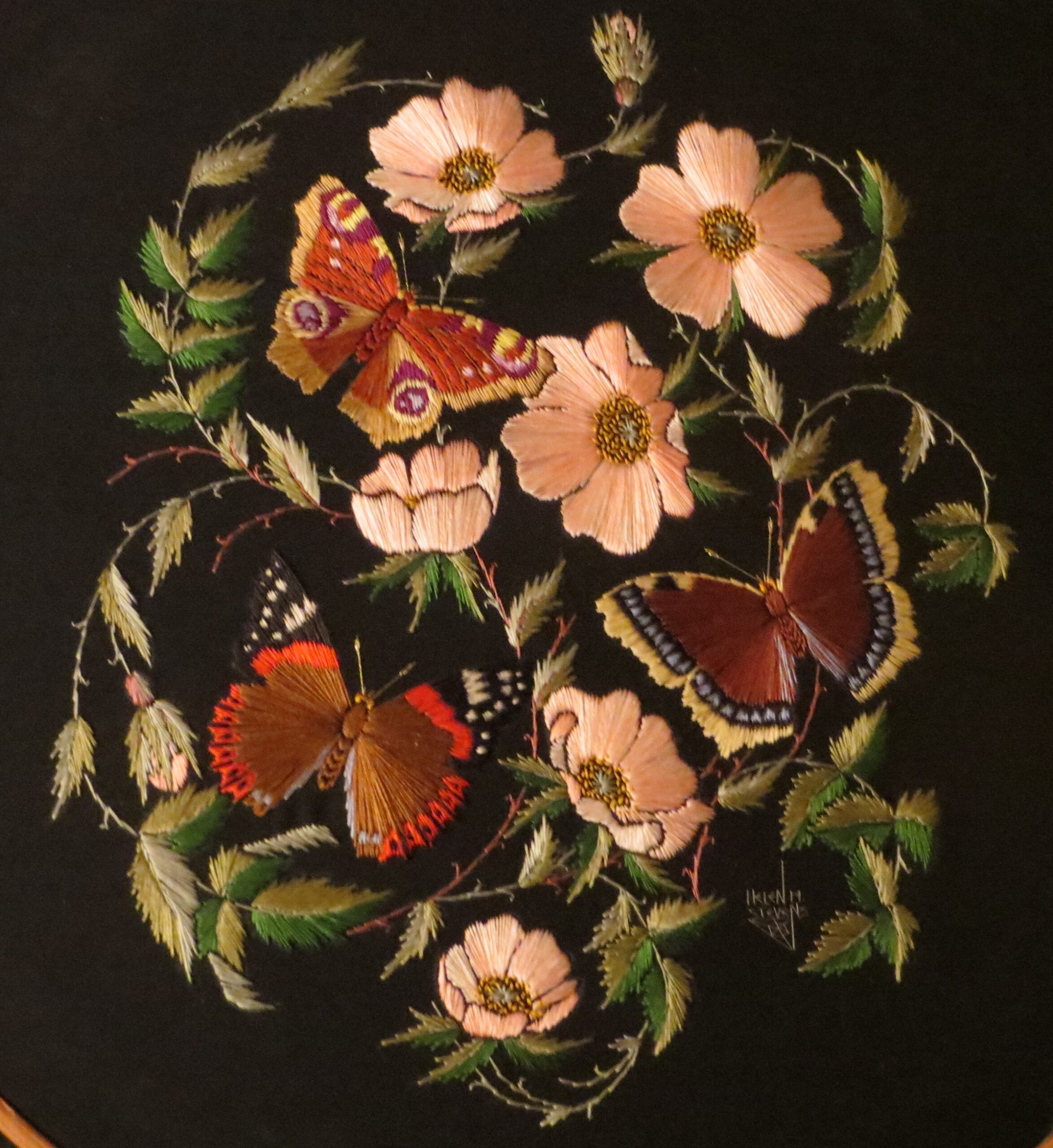
I inteviewed Helen M Stevens about how she has revived the art of embroidery, creating original contemporary patterns while studying and drawing on, “One of

I interviewed Councillor Rachel Smith-Lyte about the origins of her passion for nature and her environmental activism. Rachel tells the story of her teaching (and
| Cookie | Duration | Description |
|---|---|---|
| cookielawinfo-checkbox-analytics | 11 months | This cookie is set by GDPR Cookie Consent plugin. The cookie is used to store the user consent for the cookies in the category "Analytics". |
| cookielawinfo-checkbox-functional | 11 months | The cookie is set by GDPR cookie consent to record the user consent for the cookies in the category "Functional". |
| cookielawinfo-checkbox-necessary | 11 months | This cookie is set by GDPR Cookie Consent plugin. The cookies is used to store the user consent for the cookies in the category "Necessary". |
| cookielawinfo-checkbox-others | 11 months | This cookie is set by GDPR Cookie Consent plugin. The cookie is used to store the user consent for the cookies in the category "Other. |
| cookielawinfo-checkbox-performance | 11 months | This cookie is set by GDPR Cookie Consent plugin. The cookie is used to store the user consent for the cookies in the category "Performance". |
| viewed_cookie_policy | 11 months | The cookie is set by the GDPR Cookie Consent plugin and is used to store whether or not user has consented to the use of cookies. It does not store any personal data. |